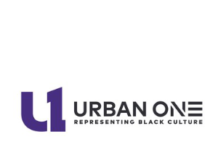
Sometimes I think we go through our lives trying to impress an invisible audience called “everyone.” “What will everyone think?”
Invisible would be bad enough, but I think “everyone” might also be imaginary. Emil Cioran was probably right when he said, “If we could see ourselves as others see us, we would vanish on the spot.”
“We buy things we don’t need, with money we don’t have, to impress people we don’t like.”
We buy cars, clothes, furniture, and art to remind ourselves — and tell the world around us — who we are.
Is it possible that everyone isn’t watching? Is there a chance that everyone is under the mistaken impression that is it we who are watching them?
It’s funny when you think about it.
And it’s also how I make my living. I’m an ad writer.
When you have a strong attraction to a brand, it’s because that brand stands for something you believe in. You see in that brand a reflection of yourself as you like to believe you are. What authors do you read? Do you subscribe to any magazines? What type of architecture attracts you? Do you listen to music? What kind?
Tell me what a person admires, and I’ll tell you everything about them that matters.
Does it bother you for me to say these things? Please don’t let it. I wasn’t talking about you. I was talking about an “else” named Everyone.
“There is nothing more disenchanting to man than to
be shown the springs and mechanism of any art. All our
arts and occupations lie wholly on the surface; it is on
the surface that we perceive their beauty, fitness, and
significance; and to pry below is to be appalled by their
emptiness and shocked by the coarseness of the strings
and pulleys.”
— Robert Louis Stevenson
The hidden mechanisms of explosive ad writing are rarely seen because most people don’t want to believe they need identity reinforcement and affirmation. They are offended by the very suggestion of it. But the truth is that most of us need these things deeply.
I met a man from Phoenix a year ago who paid me to give him advice for a day. We spent that day talking about several companies he owned. At the end of the day he asked if I might be willing to write ads for these companies, and I — for a variety of reasons — declined. A few months later I received a long e-mail from him telling me about a troubled company he had acquired that had lost two-thirds of all its customers, a loss of more than $20 million a year in revenue. I wrote back and told him that I would write ads for this troubled company, but not for the others.
The first ad I wrote shares a bittersweet, true story from the childhood of the man who hired me. It’s about something that happened to him when he was 10 years old, and it’s why he bought the troubled company. Upon receiving the ad, he called six different people and read it to them. Each of them got tears in their eyes.
Not because the story was about him, but because it was about them, too.
The story in the ad is about a certain kind of magic that each of us guards deep in our heart like buried treasure. Even you.
I have every confidence that the ad campaign will recover those lost customers and lift this once-troubled company into a sunlit sky.
To write an explosive explanatory ad, you must choose:
1. How to end.
2. Where to begin.
3. What to leave out.
You must include specific details in your ad, or it won’t have credibility: “a year ago … Phoenix … two-thirds… $20 million … 10 years old.”
But you must also leave something out of your ad or it won’t trigger curiosity: “a certain kind of magic that each of us guards deep in our heart like buried treasure.”
The ad that made people cry was for an HVAC company. You really want to read it, don’t you? For obvious reasons, I won’t be sharing that ad in this column.
It’s all about what you leave out.








